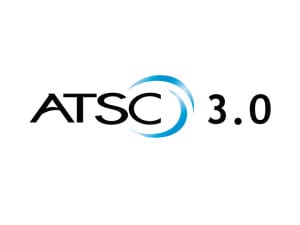Announcement gives broadcasters stronger impetus to make equipment decisions in preparation for Spectrum Repack and beyond, including the benefits of vertical polarization for mobile TV reception
RAYMOND, Maine – March 15, 2017 – Dielectric, Raymond, Maine February 2017……Dielectric, a pioneer in purpose-engineered antennas and RF systems for TV and radio broadcasters, is encouraged by the FCC’s release of the Notice of Proposed Rulemaking (NPRM), which seeks comments on the voluntary adoption of ATSC 3.0 by broadcasters as long as their ATSC 1.0 signal is kept available.
The announcement is an important development for local TV stations that choose to retain their broadcast licenses and continue over-the-air operations.
“The timing of this NPRM could not be better as stations receive their new channel assignments and start planning for the TV spectrum repack,” said Keith Pelletier, vice president and general manager of Dielectric. “The repack is without question the greatest disruption for broadcasters in many years, yet the beginning of exciting new opportunities that the industry can now begin planning for in earnest.”
Decisions on equipment made for the repack can directly impact the station’s ability to take advantage of the features of the new OFDM-based, end-to-end IP connectivity that is native to the ATSC 3.0 standard. Perhaps the feature of most benefit to broadcasters is the ability to choose modulation and coding (MODCOD) combinations, which are tailored for robust reception by portable and mobile devices.
In concert with a robust MODCOD, the addition of vertical polarization – one of many antennas that Dielectric specializes in from an engineering standpoint – has been proven to further enhance reception in the high scatter environment that mobile device users will likely experience.
“Many broadcasters understand the benefits that vertical polarization provides and we are being asked to provide quotations for repack antennas with a vertical component for ATSC 1.0 use even if stations currently only have horizontally polarized antennas,” said Jay Martin vice president of sales, Dielectric. “The FCC can only reimburse repacked stations on a like-for-like basis, but the cost difference to add the vertical component to the antenna is relatively minor, considering that the installation costs will be reimbursable.”
The specific amount of vertical polarization is not critical, according to John Schadler, Dielectric vice president of engineering. He notes that extensive field testing shows that as little as 20 percent of a vertical component can produce significant gains in fade margin. This is good news for broadcasters as the vertical component does require transmitter power – a very important consideration in equipment and operating costs.
“To remain relevant in the bit delivery business of the future broadcast market, all stations in a market will have to deliver robust signals capable of being received by a wide variety of, as yet undefined, devices,” said Schadler. “The bits delivered by stations with inferior signal quality or robustness will simply not be as valuable. Investing a modest amount now to add vertical polarization is a wise move to safeguard the future viability of a station.”
Dielectric will showcase a complete range of vertical polarization antenna options at the 2017 NAB Show from April 24-27 at the 2017 NAB Show, including the new TFU-GTH-BB antenna. Dielectric exhibits at Booth C2613.
About Dielectric
Based in Raymond, Maine, Dielectric LLC is a wholly owned subsidiary of Sinclair. Dielectric is a leading provider of innovative broadcast products. From remote stations to major markets, Dielectric has been delivering solutions for every need since 1942. Dielectric is an innovative, customer-centric organization with a long history of engineering excellence in designing and manufacturing high-quality broadcast solutions. The Company is a trusted partner of broadcasters worldwide. More information can be accessed at www.dielectric.com
# # #

